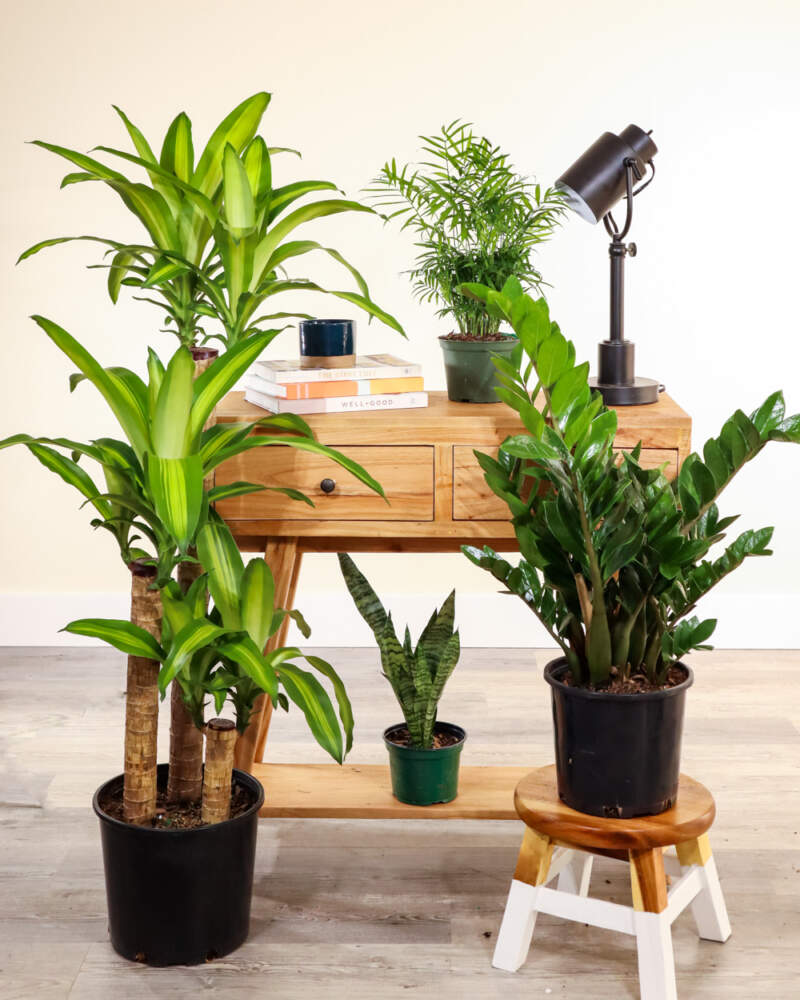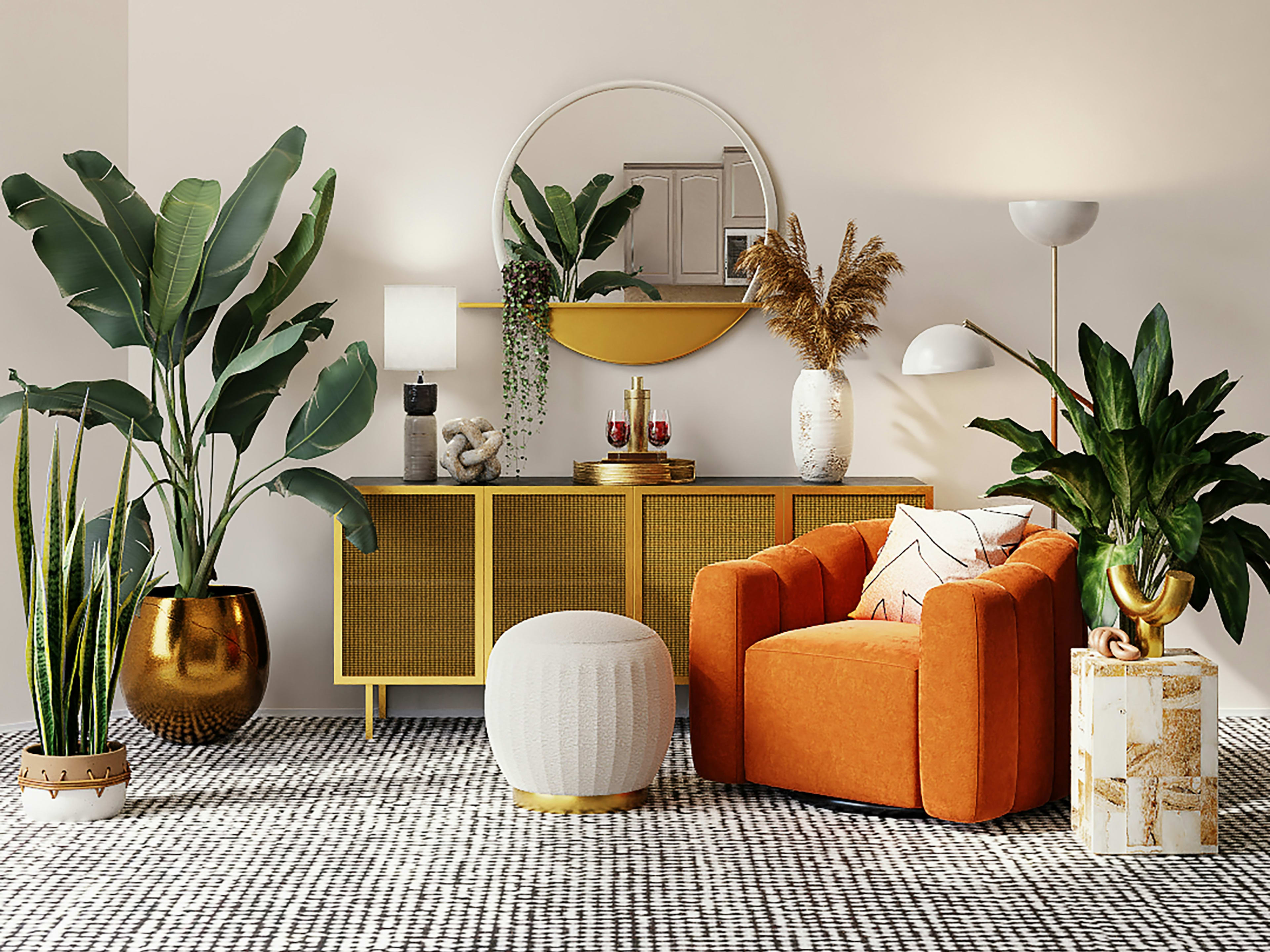Best Low-Light Indoor Plants That Add Greenery to Any Space with Little Light
Best Low-Light Indoor Plants That Add Greenery to Any Space with Little Light
Blog Article
Explore the Unique Benefits of Low-Light Indoor Plants for Your Living Room
Integrating low-light indoor plants into your living area supplies a wide range of advantages that prolong far beyond plain visual appeals. These hardy plants not just grow in settings with restricted sunlight but also offer essential functions such as air purification and humidity improvement.
Air Purification Advantages
Low-light indoor plants not only improve the aesthetic appeal of living areas however additionally play a substantial role in air filtration. Research study has shown that certain plant varieties can successfully eliminate usual interior contaminants, including trichloroethylene, formaldehyde, and benzene. These compounds typically originate from household things such as furnishings, cleaning products, and structure products, adding to interior air high quality issues.
Plants such as the snake plant, pothos, and peace lily are particularly experienced at filtering harmful materials from the air while flourishing in low-light problems. The procedure of phytoremediation, wherein plants soak up and metabolize toxic substances, allows these species to add dramatically to a much healthier indoor setting. In addition, through photosynthesis, plants launch oxygen, further improving air high quality.
Including low-light interior plants right into home or workplace spaces not only offers aesthetic advantages yet additionally functions as a functional approach for enhancing air top quality. By selecting the ideal species, people can produce an environment that advertises wellness and reduces direct exposure to harmful toxins, making these plants a crucial component in modern indoor living.

State Of Mind Enhancement Results
Numerous research studies have actually shown that including indoor plants can dramatically enhance mood and total psychological wellness. The visibility of greenery in interior environments has been connected to decreased tension levels, enhanced sensations of peace, and boosted emotional wellness. Low-light interior plants, particularly, flourish in environments where all-natural light is restricted, making them excellent for numerous living areas.
Study indicates that engaging with plants can promote the launch of serotonin, a neurotransmitter connected with feelings of happiness and health. Furthermore, the act of caring for plants cultivates a feeling of responsibility and accomplishment, further contributing to favorable psychological health and wellness outcomes. Low-light plants such as snake plants, pothos, and tranquility lilies have been revealed to improve air high quality, which is intrinsically connected to mood improvement.
Integrating these plants into your home or office can develop a serene ambience, offering a visual and sensory escape from the pressure of life - Best low-light indoor plants. As people invest raising amounts of time inside your home, the mood-enhancing effects of low-light indoor plants become also a lot more important, supplying not just aesthetic allure yet likewise a profound effect on psychological health
Reduced Maintenance Requirements
For those seeking to improve their interior rooms without a significant time commitment, low-light indoor plants are an optimal selection due to their low maintenance requirements. These durable plants thrive in less-than-ideal illumination conditions, making them excellent for offices and homes where all-natural sunlight is limited.

Pest resistance is one more advantage of low-light indoor plants. Numerous ranges are much less prone to usual parasites, lowering the demand for consistent surveillance and treatment. In addition, these plants usually expand extra gradually than their high-light counterparts, meaning much less regular repotting and pruning are necessary.
Aesthetic Allure and Adaptability

Additionally, these plants can be arranged in myriad ways, whether in teams for a rich impact or as standalone features to attract the eye. The selections of planter styles-- from sleek ceramic pots to rustic wood containers-- better improve their aesthetic value, permitting home owners to share their personal style.
Moreover, low-light plants can be strategically positioned in areas that may or else really feel overlooked, such as corners or poorly lit racks, consequently maximizing their attractive possibility. Eventually, the combination of their striking look and adaptability makes low-light interior plants a valuable addition to any type of living area, producing a welcoming atmosphere that promotes wellness and leisure.
Improved Humidity Degrees
Enhancing indoor humidity levels is among the considerable advantages of incorporating low-light interior plants into living areas. These plants normally release dampness vapor through a procedure referred to as transpiration, which happens when water soaked up by the roots relocates through the plant and evaporates from the fallen leaves. This process not only raises humidity however additionally adds to a much healthier indoor atmosphere.
Better humidity degrees can ease various health and wellness problems, such as dry skin, respiratory system problems, and allergic reactions. Many people experience pain in dry interior problems, particularly during winter season when furnace are in use. By purposefully putting low-light plants throughout your home, you can develop a more well balanced humidity degree that cultivates overall health.
In addition, particular low-light interior plants, like tranquility lilies and crawler plants, are specifically reliable at raising moisture (Best low-light indoor look what i found plants). Therefore, low-light indoor plants serve pop over here both aesthetic and functional objectives, advertising a much healthier environment.
Final Thought
In summary, low-light interior plants offer many advantages that contribute to a much healthier and more welcoming living room. Incorporating these durable plants right into indoor setups not only raises the setting but likewise advertises overall health, establishing a relaxing haven for homeowners.
Plants such as the snake plant, pothos, and tranquility lily are specifically adept at filtering harmful compounds from the air while prospering in low-light conditions. Low-light plants such as snake plants, pothos, and tranquility lilies have been revealed to improve air high quality, which is inherently linked to mood enhancement.
Low-light indoor plants, such as snake plants, pothos, and ZZ plants, not just enhance the visual landscape of a room yet additionally present numerous textures and tones of green that can match varied interior styles. These plants naturally release moisture vapor through a process recognized as transpiration, which takes place when water taken in by the roots relocates with the plant and evaporates from the leaves.Additionally, specific low-light interior plants, like peace lilies and crawler plants, are particularly reliable at boosting humidity.
Report this page